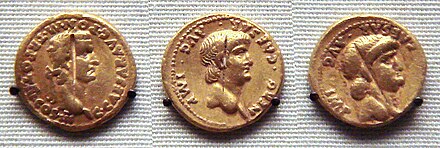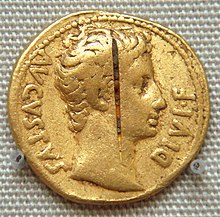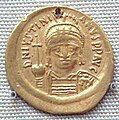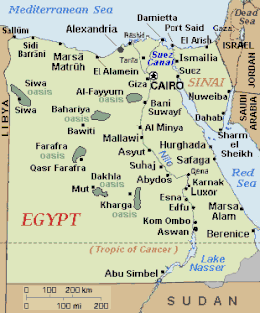
The Periplus of the Erythraean Sea, also known by its Latin name as the Periplus Maris Erythraei, is a Greco-Roman periplus written in Koine Greek that describes navigation and trading opportunities from Roman Egyptian ports like Berenice Troglodytica along the coast of the Red Sea and others along the Horn of Africa, the Persian Gulf, Arabian Sea and the Indian Ocean, including the modern-day Sindh region of Pakistan and southwestern regions of India.

A periplus, or periplous, is a manuscript document that lists the ports and coastal landmarks, in order and with approximate intervening distances, that the captain of a vessel could expect to find along a shore. In that sense, the periplus was a type of log and served the same purpose as the later Roman itinerarium of road stops. However, the Greek navigators added various notes, which, if they were professional geographers, as many were, became part of their own additions to Greek geography.

A trade route is a logistical network identified as a series of pathways and stoppages used for the commercial transport of cargo. The term can also be used to refer to trade over bodies of water. Allowing goods to reach distant markets, a single trade route contains long-distance arteries, which may further be connected to smaller networks of commercial and noncommercial transportation routes. Among notable trade routes was the Amber Road, which served as a dependable network for long-distance trade. Maritime trade along the Spice Route became prominent during the Middle Ages, when nations resorted to military means for control of this influential route. During the Middle Ages, organizations such as the Hanseatic League, aimed at protecting interests of the merchants and trade became increasingly prominent.

Roman commerce was a major sector of the Roman economy during the later generations of the Republic and throughout most of the imperial period. Fashions and trends in historiography and in popular culture have tended to neglect the economic basis of the empire in favor of the lingua franca of Latin and the exploits of the Roman legions. The language and the legions were supported by trade and were part of its backbone. The Romans were businessmen, and the longevity of their empire was caused by their commercial trade.

Berenice Troglodytica, also called Berenike or Baranis, is an ancient seaport of Egypt on the western shore of the Red Sea. It is situated about 825 km south of Suez, 260 km east of Aswan in Upper Egypt and 140 km south of Marsa Alam. It was founded in 275 BCE by Ptolemy II Philadelphus (285–246 BCE), who named it after his mother, Berenice I of Egypt.
Rhapta was an emporion said to be on the coast of Southeast Africa, first described in the 1st century CE. Its location has not been firmly identified, although there are a number of plausible candidate sites. The ancient Periplus of the Erythraean Sea described Rhapta as "the last emporion of Azania", two days' travel south of the Menouthias islands. The Periplus also states that the city and port were ruled by South Arabian vassals of the Himyarite kingdom, particularly a certain “Mapharitic chieftain.”
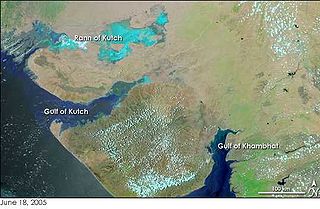
Indian maritime history begins during the 3rd millennium BCE when inhabitants of the Indus Valley initiated maritime trading contact with Mesopotamia. India's long coastline which occurred due to the protrusion of India's Deccan Plteau helped it to make new trade relations with the Europeans, especially the Greeks, and the length of its coastline on the Indian Ocean is partly a reason why it's known as that since 1515, and was known as the Eastern Ocean earlier. The ocean was called so, due to the advent of international trade by the Europeans which still continues to this day. As per Vedic records, Indian traders and merchants traded with the far east and Arabia. During the Maurya Empire, there was a definite "naval department" to supervise the ships and trade. At the end of 1st century BCE Indian products reached the Romans during the rule of Augustus, and the Roman historian Strabo mentions an increase in Roman trade with India following the Roman annexation of Egypt. As trade between India and the Greco-Roman world increased, spices became the main import from India to the Western world, bypassing silk and other commodities. Indians were present in Alexandria while Christian and Jewish settlers from Rome continued to live in India long after the fall of the Roman Empire, which resulted in Rome's loss of the Red Sea ports, previously used to secure trade with India by the Greco-Roman world since the Ptolemaic dynasty. The Indian commercial connection with Southeast Asia proved vital to the merchants of Arabia and Persia during the 7th–8th century. A study published in 2013 found that some 11 percent of Australian Aboriginal DNA is of Indian origin and suggests these immigrants arrived about 4,000 years ago, possibly at the same time dingoes first arrived in Australia.

Myos Hormos was a Red Sea port founded by the Ptolemy II Philadelphus upon a headland of similar name, around the 3rd century BC. Later, it was renamed to Aphrodites Hormos but the elder appellation is more generally retained.
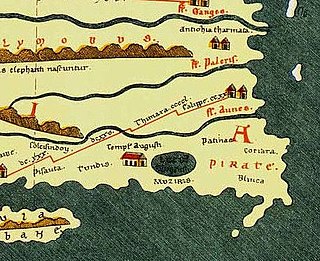
Muchiri, commonly anglicized as Muziris was an ancient harbour and an urban centre on the Malabar Coast. Muziris found mention in the Periplus of the Erythraean Sea, the bardic Tamil poems and a number of classical sources. It was the major ancient port city of Cheras. Core of the city situated in the present day North Paravoor area. The exact location of Muziris has been a matter of dispute among historians and archaeologists. However, excavations since 2004 at Pattanam, near North Paravur, have led some experts to suggesting the hypothesis that the city was located just there. It was an important trading port for Christian and Muslim merchants arriving from other countries.

Thrissur is the administrative capital of Thrissur District, in the central part of Kerala state, India. Thrissur district was formed on 1 July 1949. It is an important cultural centre, and is known as the Cultural Capital of Kerala. It is famous for the Thrissur Pooram festival, one of the most colourful and spectacular temple festival of Kerala. From ancient times, Thrissur has been politically, economically and culturally significant to the Indian subcontinent. It has opened the gates for Arabs, Romans, Portuguese, Dutch and English. According to tradition, Thrissur is where Christianity, Islam and Judaism entered the Indian subcontinent. Local Christian tradition holds that Thomas the Apostle arrived in 52 CE, and Muslim tradition states that Methala is the location of country's first mosque.

The economy of the ancient Tamil country describes the ancient economy of a region in southern India that mostly covers the present-day states of Tamil Nadu and Kerala. The main economic activities were agriculture, weaving, pearl fishery, manufacturing and construction. Paddy was the most important crop; it was the staple cereal and served as a medium of exchange for inland trade. Pepper, millets, grams and sugarcane were other commonly grown crops. Madurai and Urayur were important centers for the textile industry; Korkai was the center of the pearl trade. Industrial activity flourished.
Africa–India relations are the historical, political, economic, and cultural connections between India and the African continent.
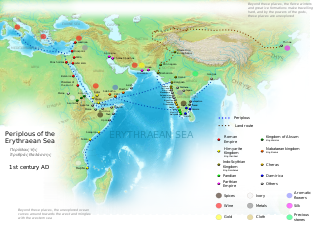
The first documented relations between Ancient India and Ancient Rome occurred during the reign of Augustus, the first Roman Emperor.
Indian Ocean trade has been a key factor in East–West exchanges throughout history. Long-distance trade in dhows and proas made it a dynamic zone of interaction between peoples, cultures, and civilizations stretching from Southeast Asia to East and Southeast Africa and East Mediterranean in the West in prehistoric and early historic periods. Cities and states on the Indian Ocean rim focused on both the sea and the land.

Tyndis was an ancient Indian seaport/harbor-town mentioned in the Graeco-Roman writings. According to the Periplus of the Erythraean Sea, Tyndis was located north of port Muziris in the country of the Cerobothra.
Nelcynda is a place in ancient Kerala. It was described in Pliny's classical work The Natural History as well as in Periplus of the Erythraean Sea. It was believed to be the capital of the Ay kingdom. Nakkada near Niranam in Pathanamthitta district is often identified with Nelcynda.

Malao was an ancient proto-Somali port in present-day Somaliland. The town was situated on the site of what later became the city of Berbera. It was a key trading member involved in the Red Sea-Indian Ocean commerce in the early centuries CE. The town also maintained an important monetary market for merchants exchanging goods in the currencies of the Roman Empire.
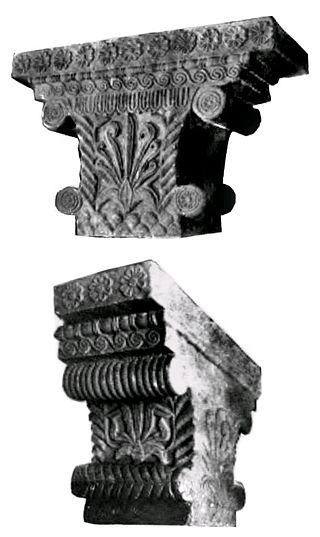
For the ancient Greeks, “India" referred to the polity situated east of Persia and south of the Himalayas. Although, during different periods of history, "India" referred to a much wider or much less extensive place.

The Kadavumbhagham Ernakulam Synagogue in Kerala, India, is the restored oldest synagogue of the Malabar Jews with a Sefer Torah scroll and offering occasional services. It was established in 1200 CE and restored several times through the centuries on the same site. It is modeled on the earliest synagogue of the Malabar Jews at Muziris, which dated from the time of ancient sea trade between the Mediterranean and Kerala.

In antiquity, the ancestors of the Somali people were an important link in the Horn of Africa connecting the region's commerce with the rest of the ancient world. Somali sailors and merchants were the main suppliers of frankincense, myrrh and spices, items which were considered valuable luxuries by the Ancient Egyptians, Phoenicians, Mycenaeans and Babylonians. During the classical era, several ancient city-states competed with the Sabaeans, Parthians and Axumites for the wealthy Indo-Greco-Roman trade.

